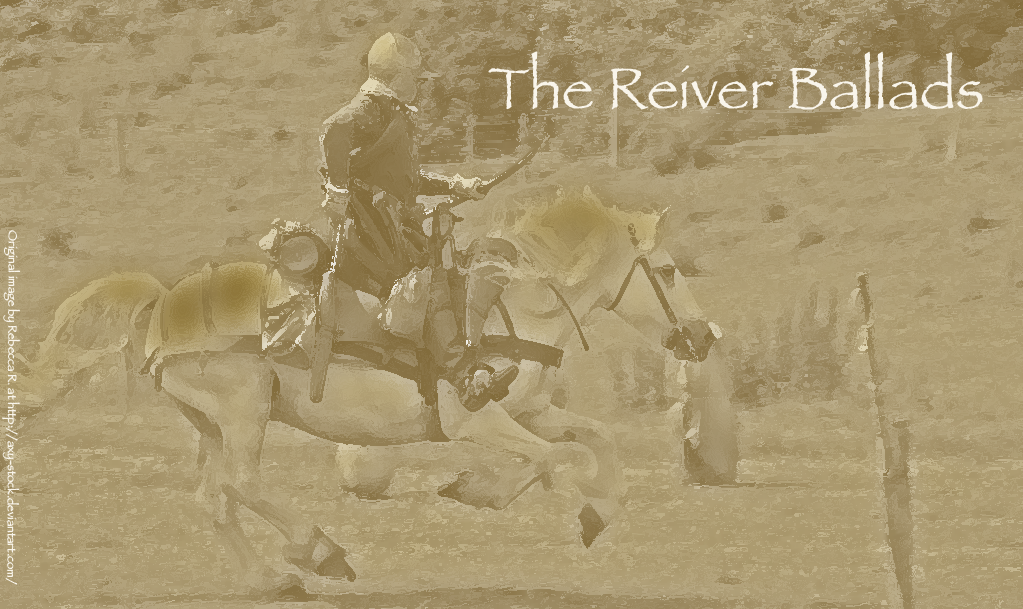The Fray of Suport
Overview
“The Fray of Suport” appeared in the Minstrelsy from the 1st edition in 1802, and appears in all the editions covered by this project. It is the 15th ballad in the 1802 edition. It is the only ballad or song that we have a direct record of Sir Walter Scott being actively involved with the collection.
The verse structure is very different from the traditional ballad format. However, “The Fray of Suport” operates very effectively as part of the reiving ballad group within the Minstrelsy. It is very precise in its geography, it names specific individuals, and while the lines and structures are very different to the other ballads, the drive and emotional impact of the verses are the same. It may be useful to consider “The Fray of Suport” alongside “Jamie Telfer of the Fair Dodhead”, as one presents a Scottish raid on English territory, while the other presents an English raid on a Scot, and while one of the heroes of “Suport” is the Captain of Bewcastle, he is the villain in “Jamie Telfer”.
History
Suport was the name of a parish and a township in the English Middle March, fairly close to the Borderline, and as such must have been a viable reiver target.
The settlement – also called Solport and Sowport – appears on early maps and is also mentioned in lists and muster rolls. It seems to always have been a small township. By 1872, in the Imperial Gazetteer of England and Wales, Solport was described as “a township in Stapleton parish, Cumberland; 7½ miles NNW of Brampton. Acres, 3,121. Real property, £1,781. Pop., 277. Houses, 52.”
The earlier maps show the settlement alongside many of the Border Towers and fortified homes, where men such as John Forster, William of Kinmont, Richie of Brackenhill lived. Suport,or rather Sowport, can be found on just below the “C” of “Cumberland” on Christopher Saxton’s map of Westmoreland and Cumberland from 1576. The settlement is not included on Burghley’s “platt”, which is interesting as it implies that it was not considered a reiver hold, but is also included on John Jansson’s map of Cumberland and Westmoreland from 1646. On Bowen and Kitchen’s map of 1760, almost all of the towers and fortified houses have gone from the map, but Sowport is still included.
The settlement is mentioned in The Calendar of Border Papers, with reference to the clans and individuals who live in the area. Thomas Musgrave, in his 1583 missive to Burghley, remarks about the source of the Leven Water “the Rutligis dwell on bothe the sides of it, untill it come to a place called the Lukkins of Leven, then it desendes Sowpert, wheare the Taylors have it, thens it desendes the boundes of Sopert, and is inhabyted with Graymes called the Graymes of Leven, and raneth into the ryver of Eske at Gorthe Storys howse called the Lard.” (CBP I 121). He then talks about the River Esk, charting its course and those who live near it, noting “it come to Canonby kyrke,and then the Armestronges and Scottishe Graymes have it untill it meete the ryver of Lydall at the Mote skore, where Fargus Grayme his howse standes” (CBP I 121).
There are a number of locations mentioned in “The Fray of Suport”, many of which can still be plotted on maps today. Some of these are are included in characters’ names, which suggest owned land, others refer to local geographic features.
The Characters
There are several characters in “The Fray of Suport”, which have historic parallels. The Captain of Bewcastle is likely to be a Musgrave: Sir Simon Musgrave was the Captain of Bewcastle for many years, having succeeded another Musgrave. He is indicted in several writs in the Calendar of Border Papers, as well as complaining against Scottish riders. Simon Musgrave also deputised his sons to be his deputy – first Christopher, then Richard and then Thomas, who had quite a reputation of his own. Given the reference to John Forster and Fargy Grame (Fergus Graham), the Captain of Bewcastle is likely to be one of these Musgraves, not Jack Musgrave, who held the post in the reign of Henry VIII, whom Scott suggests as a source for the character.
John Forster was the Warden of the English Middle March over a 30 year period: he died in 1602, most probably in his nineties. He lost the wardenship in 1595, but had not been active in the role for many years.
The other characters reflect the the common use of nick-names (or “to-names”) used by the Borderers in the 16th and 17th centuries. This was due to the preponderance of a limited number of surnames. Sleepery Sim and Snoring Jock are ironic references to this kind of identifcation, but the Reid Souter, Ringan’s Wat and lang Aiky are typical to-names. You can find more of these names scattered throughout the Calendar of Border Papers.
